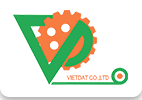Flexo Printing Method
Main content
The flexographic printing method is a form of the soft printing process. Basically it can print on plastic, metal, cellophane, paper, carton. It is widely used on non-porous surfaces for various food packaging types.
Application of flexo printer: this is the fastest growing and popular printing technique on all commodities. Food packaging is an important market because flexographic printing has the advantage of printing on thin film materials that do not absorb thasams. Other popular applications printed with flexo include wrapping paper, wall stickers, magazines, advertisements, paperback books, etc.
Flexo Printing Process: The plates used are made of molded rubber or polymer for the image storage areas (printing elements are above the guest areas that do not contain images). Flexo is a direct printing method in which the ink of an image on a plate is transferred directly to the surface of the media. In the traditional system, there is a special batch called an "anilox batch" that is used to quantify the ink onto the print and then transferred to the material.
.png)
Principle of flexo printing
Anilox shaft
Anilox can be considered as the core component in the ink transmission system, it is considered as a “copper tube printing shaft without motive (ie without printing element). on the surface of the anilox shaft are small holes containing ink, ink volume will be calculated in units of [cm³ / m²] or [ml / m²]. Anilox shaft surface can be made of metal (steel, chrome-plated copper (rare)) or Keramik (ceramic).
There are 6 main quantities to describe an anilox axis:
Diameter, shaft length
- Engraving method (line or rhythm form)
- The order of small holes: orthogonal form of contact with 4 edges or contact form of 6 edges
- Angle of tram (where the small holes are considered as tram seeds and based on the arrangement order that people have different angles, the average is 3 45 ° for the 4-sided orthogonal form, 30 ° / 60 ° for 6-sided contact form
- The density of holes / tram
- Ink storage volume of holes: wall thickness, opening of hole
The way to engrave the anilox is also very different, one can use the engraving method with a beat percussion device on the coarse shaft, or using a batch (Molette) to roll evenly onto the surface of the shaft. The common feature of these two methods is that the element engraved on the anilox shaft will be the negative part of the engraving device.
In addition, you can use the classical method with Pigment paper of gravure printing to create details on the surface of the anilox shaft.
The above methods are only applicable to anilox shaft with metal surface, for anilox shaft using keramik, one must use thermal laser engraving method due to its mechanical strength such as very hard, wear resistance. high .. by Keramik.









